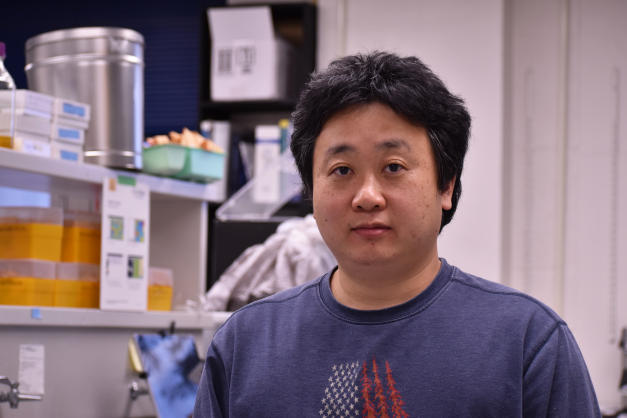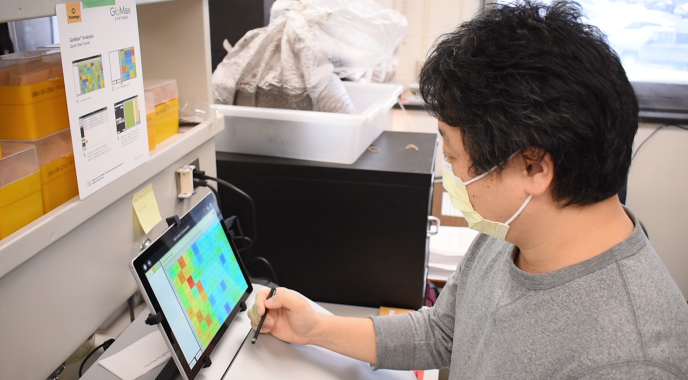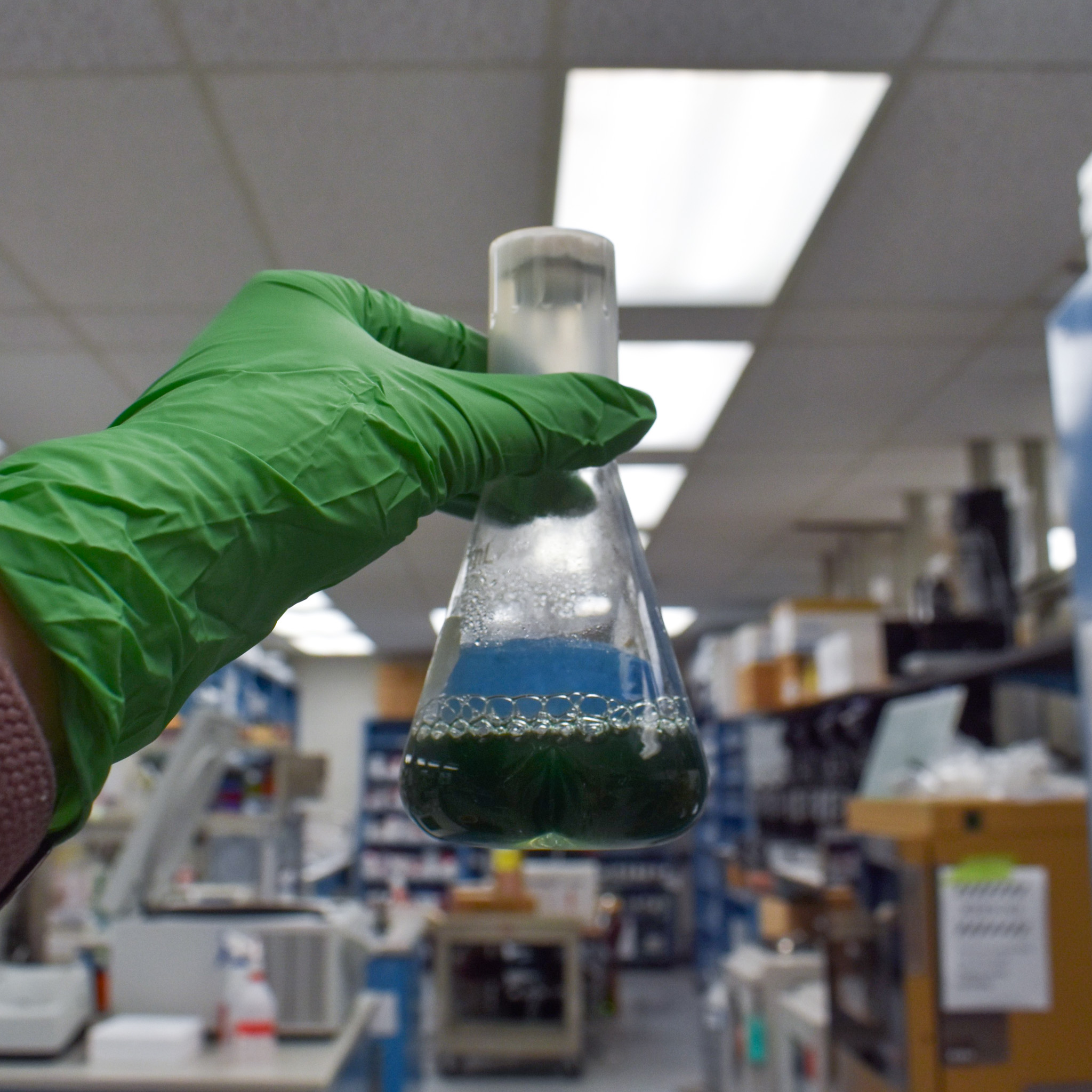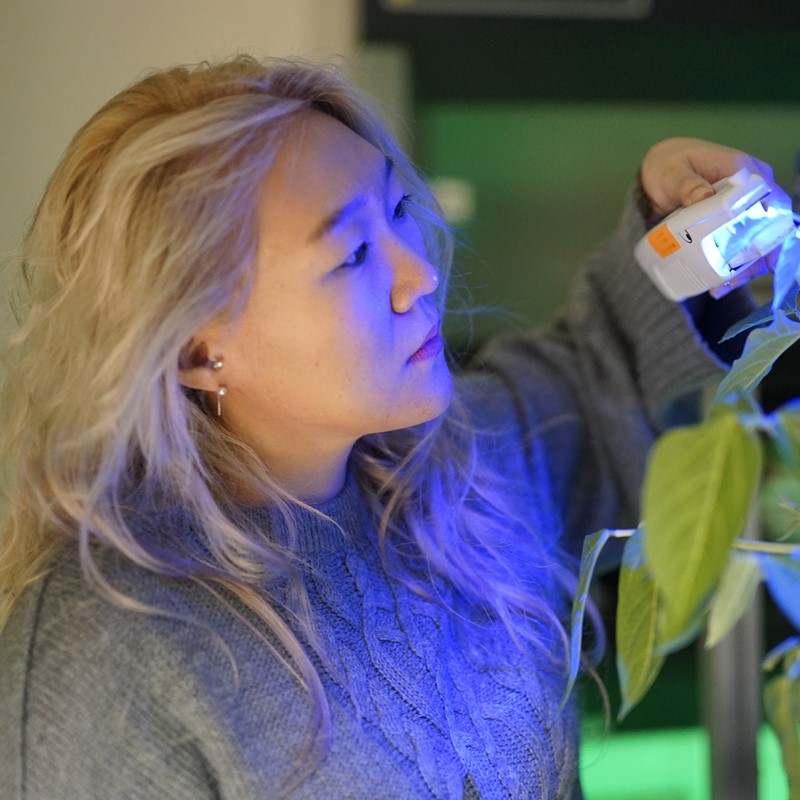Plants get stressed too. We're looking at thousands of genes to understand how they manage it.
MSU scientists have developed a new gene discovery method that is helping them to understand how plants recover from stressful situations in their environments. The approach, which covers big data sets spanning thousands of genes and hundreds of interactions between DNA and proteins, has long-term implications for agricultural productivity and the breeding of more resilient crops.
The study, led by Dae Kwan Ko, a postdoctoral researcher in the lab of MSU-DOE Plant Research Laboratory scientist Federica Brandizzi was recently published in the journal Communications Biology.
“This work contributes to the efforts in our lab to identify the factors that operate in the stress responses of an essential and ubiquitous organelle, the endoplasmic reticulum,” said Brandizzi, who is also an MSU Foundation Professor of plant biology in the College of Natural Science. “By identifying these factors, we can engineer plants to be more productive and resilient to stress.”
Like many complex life forms, plants have a protection system, the unfolded protein response (UPR), that alerts plants to dangers posed by certain stressful situations. Those situations range from environmental stresses outside of plants’ control, like drought and heat, to others that occur during their development, such as the growing pains of young seedlings.
These pressures take a toll on plants’ endoplasmic reticulum (ER), a massive factory that churns out proteins that perform various critical functions, like growth, metabolism or protection against external threats. A stressed-out ER will produce misshapen and defective proteins that harm the host plant.

By Kara Headley, MSU-DOE Plant Research Laboratory
The UPR’s job is to detect the danger and help the ER to make functional proteins. Once the stressor is gone, the UPR will allow the ER to resume the production of healthy proteins.
“So far, scientists have identified key genes encoding the proteins that turn on the UPR response,” Ko said. “But we do not know how these genes interact with each other, how they communicate inside of a cell and with the rest of the plant in order to protect that plant.”
The barrier to understanding the UPR in plants is two-fold: First, most UPR work has been done in non-plant species. Second, research focuses on isolated cell cultures, and this approach is not ideal to identify single genes that play a role in the UPR at a whole-organisms level.
Network-based gene discovery
In the new study, Dae Kwan and Federica report a whole-organism approach to studying the UPR at a systems level.
The system relies on big data sets that map out networks of interactions between thousands of genes and major transcription factors – proteins that turn genes on and off. The map allows scientists to tease out connections between genes based on their activity levels.
“We can score the importance of the relationships between two genes based on different factors. For example, two genes might be very active at similar time points during the UPR process. Or, a change in the activity of one gene correlates with a change in that of another gene,” Dae Kwan said. “We then develop 'coexpression' modules that describe the relationships between thousands of genes.”
UPR and stress recovery
“By taking this network-enabled approach, as opposed to the traditional method of examining single genes one at a time, we have started to see how the UPR affects other plant processes,” Dae Kwan said. “We can see where the functions of key transcription factors overlap and where they specialize.”

By Kara Headley, MSU-DOE Plant Research Laboratory
Although the UPR is mostly known to manage ER stress, the new data shows it also aids with plant recovery once the stress has passed. For example, the scientists discovered a network of genes and transcription factors related to root growth. The most interconnected genes encourage root development after recovery from ER stress, and removing these genes led to shorter, underdeveloped roots.
“We also found other coexpression modules that impact other significant biological pathways including photosynthesis, metabolites and secondary metabolism,” Dae Kwan said. “These relationships reveal potential crosstalk between UPR genes and thousands of other genes that affect various plant organs.”
“Dae Kwan has done a fantastic job in producing the results,” Brandizzi said. “His ability to elaborate large-scale genomics data sets has been instrumental to the success of this work.”
In addition to working for plants, the network-based approach could be adapted to studying mammalian systems, where UPR genes are known to manage diseases like cancer.
“Now that we have this tool, we want to drill further into the UPR genes. We want to know what regulates their behaviors, how they interact with other plant processes and whether different UPR genes specialize in handling certain stresses.”
Funding for this research was primarily provided by the National Institutes of Health, with contributing support from the Great Lakes Bioenergy Research Center; U.S. Department of Energy, Office of Science, Office of Biological and Environmental Research; Chemical Sciences, Geoscience and Biosciences Division, Office of Basic Energy Sciences; Office of Science, U.S. Department of Energy; and MSU AgBioResearch.
By Igor Houwat and Kara Headley; Banner image by Kara Headley



